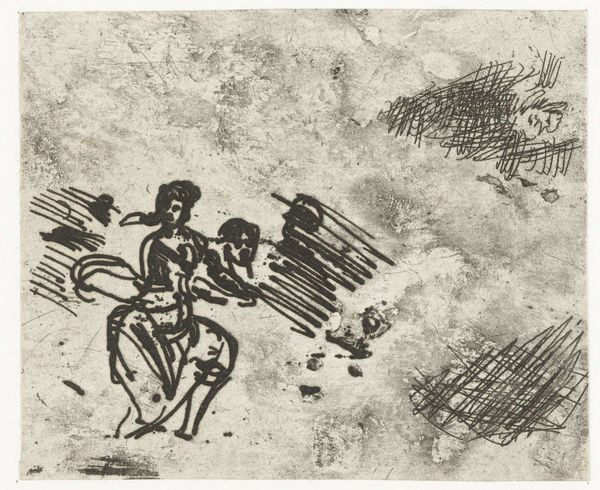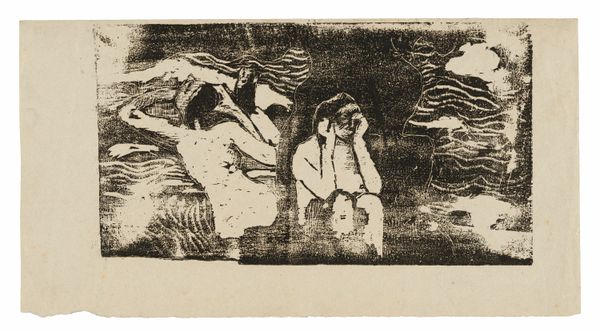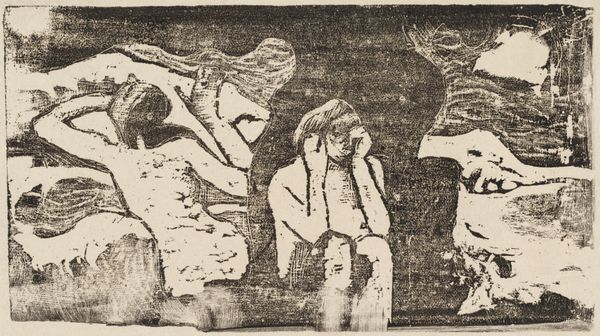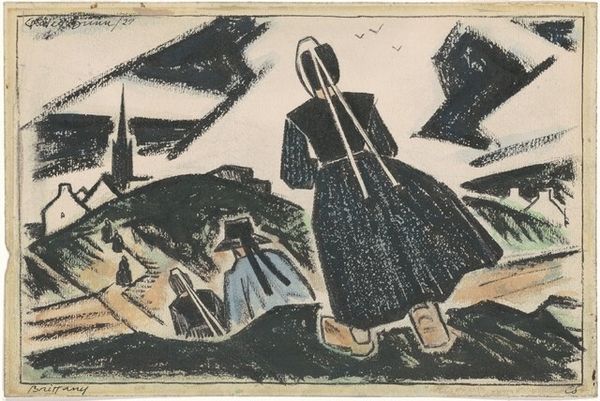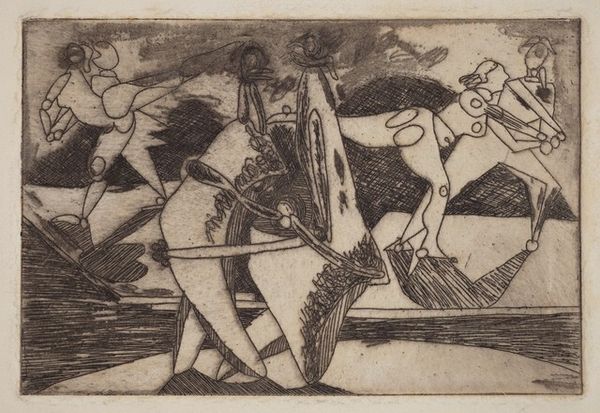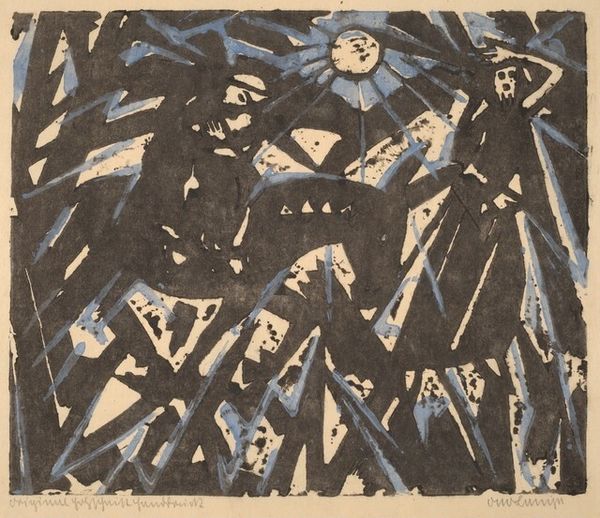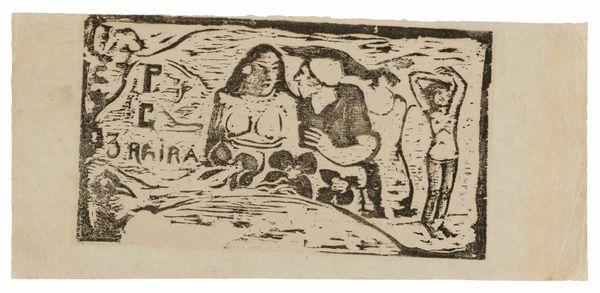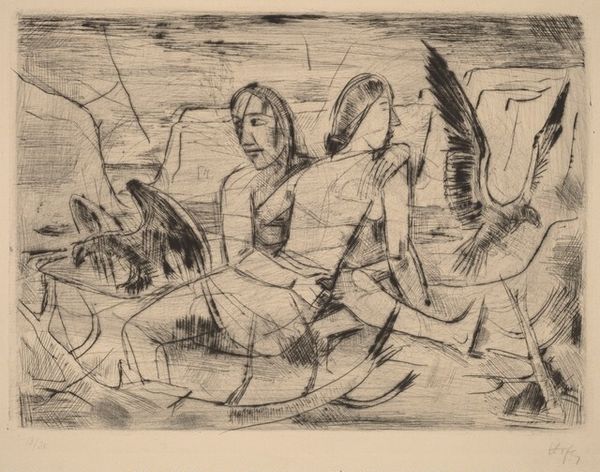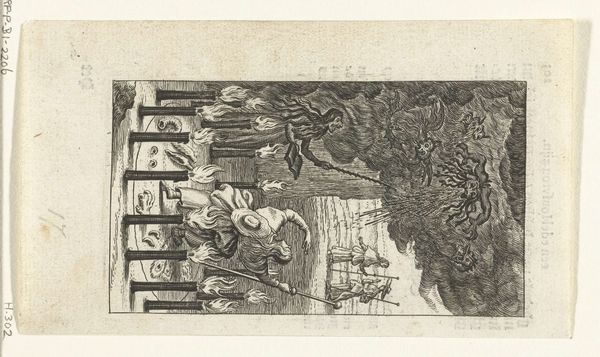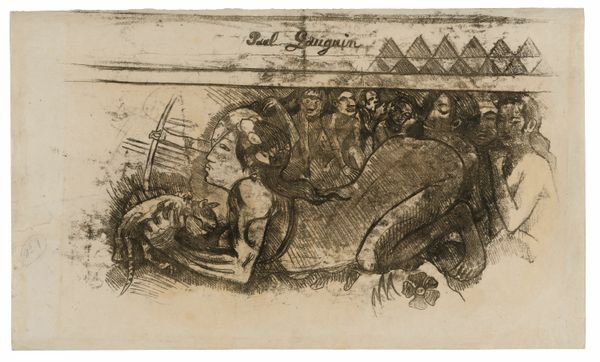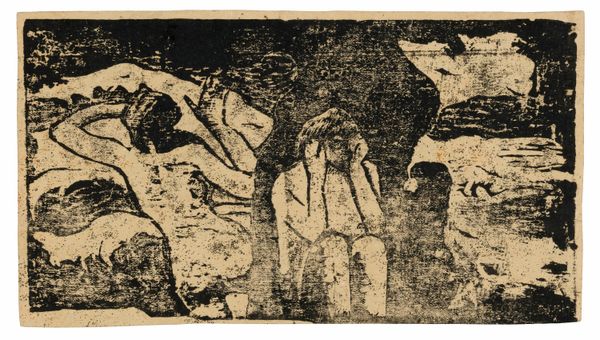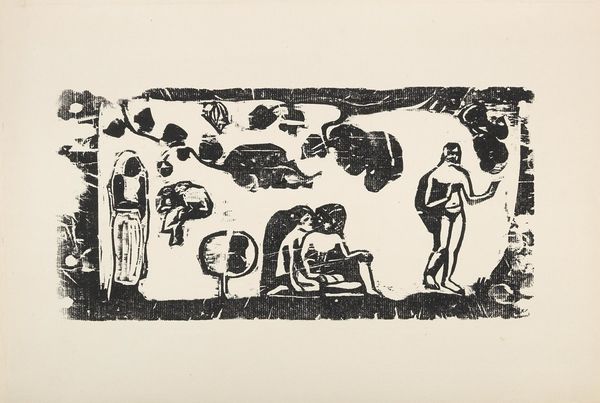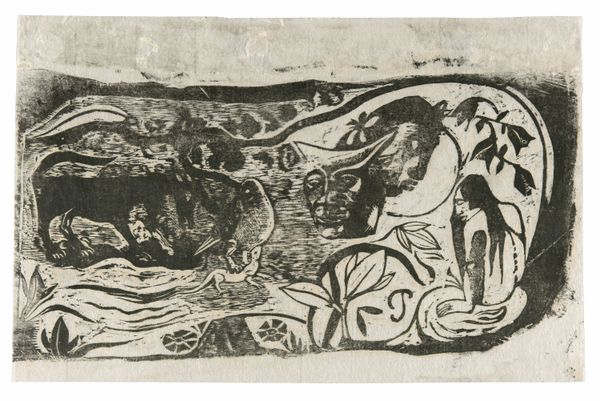
Miraculous Apparition of The Virgin of Guadalupe in a Maguey c. 1890 - 1895
0:00
0:00
graphic-art, print, paper, woodcut
#
graphic-art
#
ink drawing
#
narrative-art
# print
#
figuration
#
paper
#
woodcut
Dimensions: 3 7/16 x 4 3/4 in. (8.73 x 12.07 cm) (image)
Copyright: No Copyright - United States
Curator: Immediately, I'm struck by the dramatic contrast and solemnity of this print. The stark black against the light ground creates an atmosphere of intense devotion. Editor: Let's delve into what we are seeing here. This woodcut by José Guadalupe Posada, titled "Miraculous Apparition of The Virgin of Guadalupe in a Maguey," was created between 1890 and 1895. It depicts the Virgin’s appearance within a maguey plant, with people kneeling in prayer. Curator: The visual language is powerful. Note how the central maguey dwarfs the buildings, emphasizing its sacred importance. And consider the kneeling figures; the lack of individual details flattens the form and transforms them into supplicating figures and archetypes. Editor: Absolutely. The fact that Posada created this as a print is key. Prints are, by definition, reproducible, which underscores the artist’s likely intention to make the sacred image available for wide circulation, potentially among those with limited access to other forms of art or religious imagery. What would it mean to experience this imagery as working class or Indigenous individual in 1890s Mexico? Curator: True, yet the sharp contrast between light and shadow gives it a spiritual quality. The figures are dark, grounded in earth, while the apparition seems to emerge from the illuminated center of the maguey. It suggests a convergence of the earthly and divine. It feels timeless. Editor: Posada wasn't only creating religious imagery; he was actively engaged with the politics of his time. The symbolism is really complex. Think about the Virgin of Guadalupe in the context of Mexican identity, intertwined with the land and the indigenous population and the struggles surrounding them at the time. Posada's use of a traditional printmaking medium makes this an extremely potent combination of form, material and symbol. Curator: So, beyond its immediate religious context, the print uses striking formalism to connect with national and religious identities? Editor: Precisely! I find it fascinating to explore how Posada used cheap materials to reach as many people as possible, and transformed Mexican popular consciousness. Curator: I agree. Analyzing its design allows us to experience both the divine presence and deep social complexities it represented. Editor: Indeed. An art experience that connects us directly with the intersection between materials and the beliefs of an epoch!
Comments
No comments
Be the first to comment and join the conversation on the ultimate creative platform.
